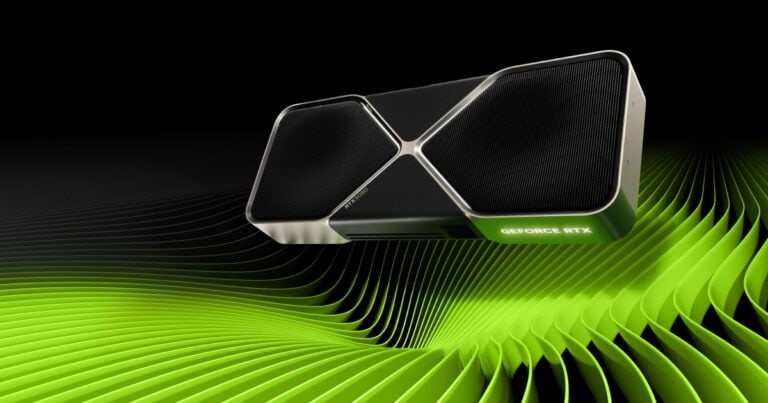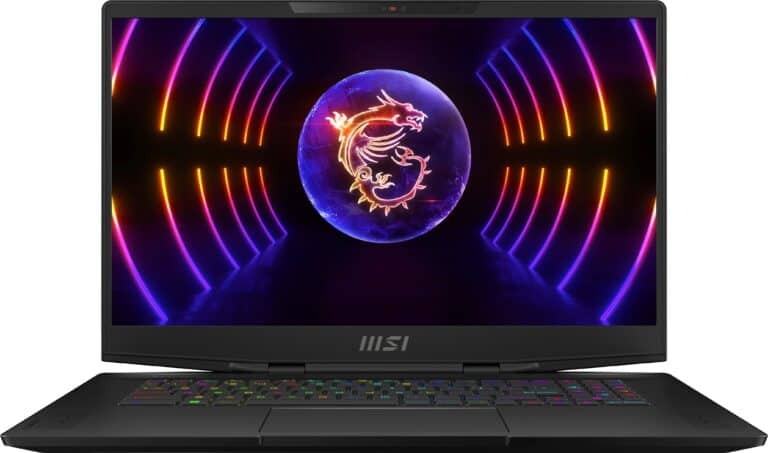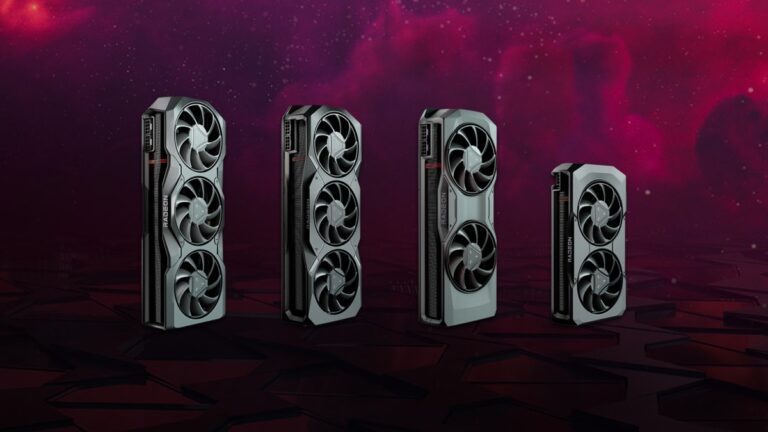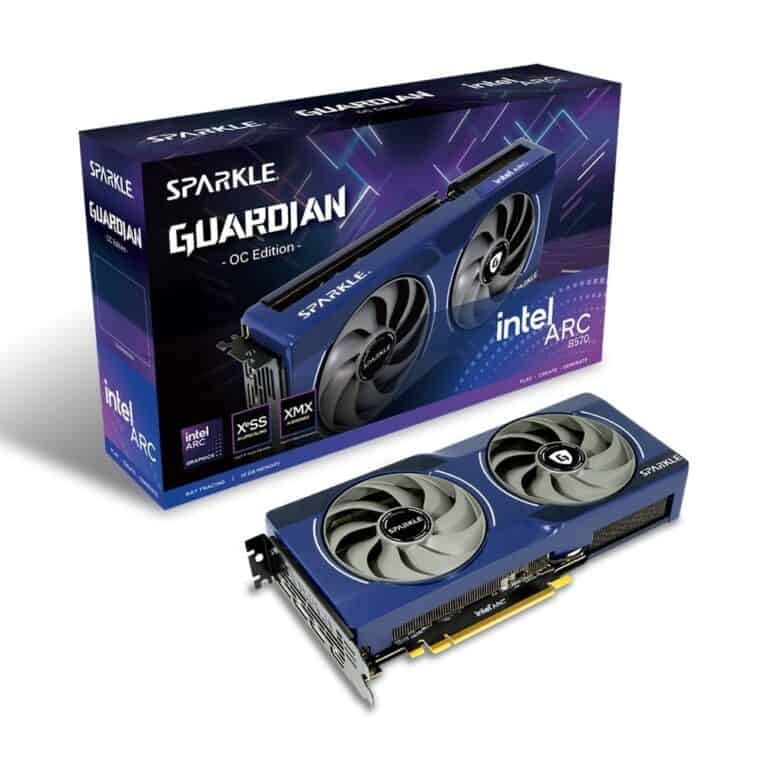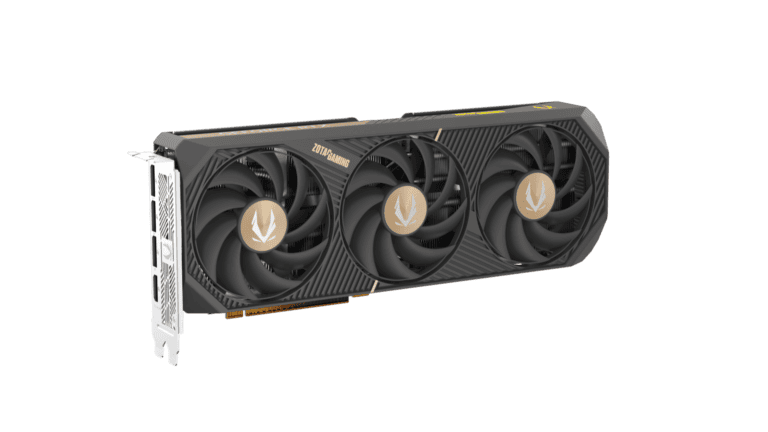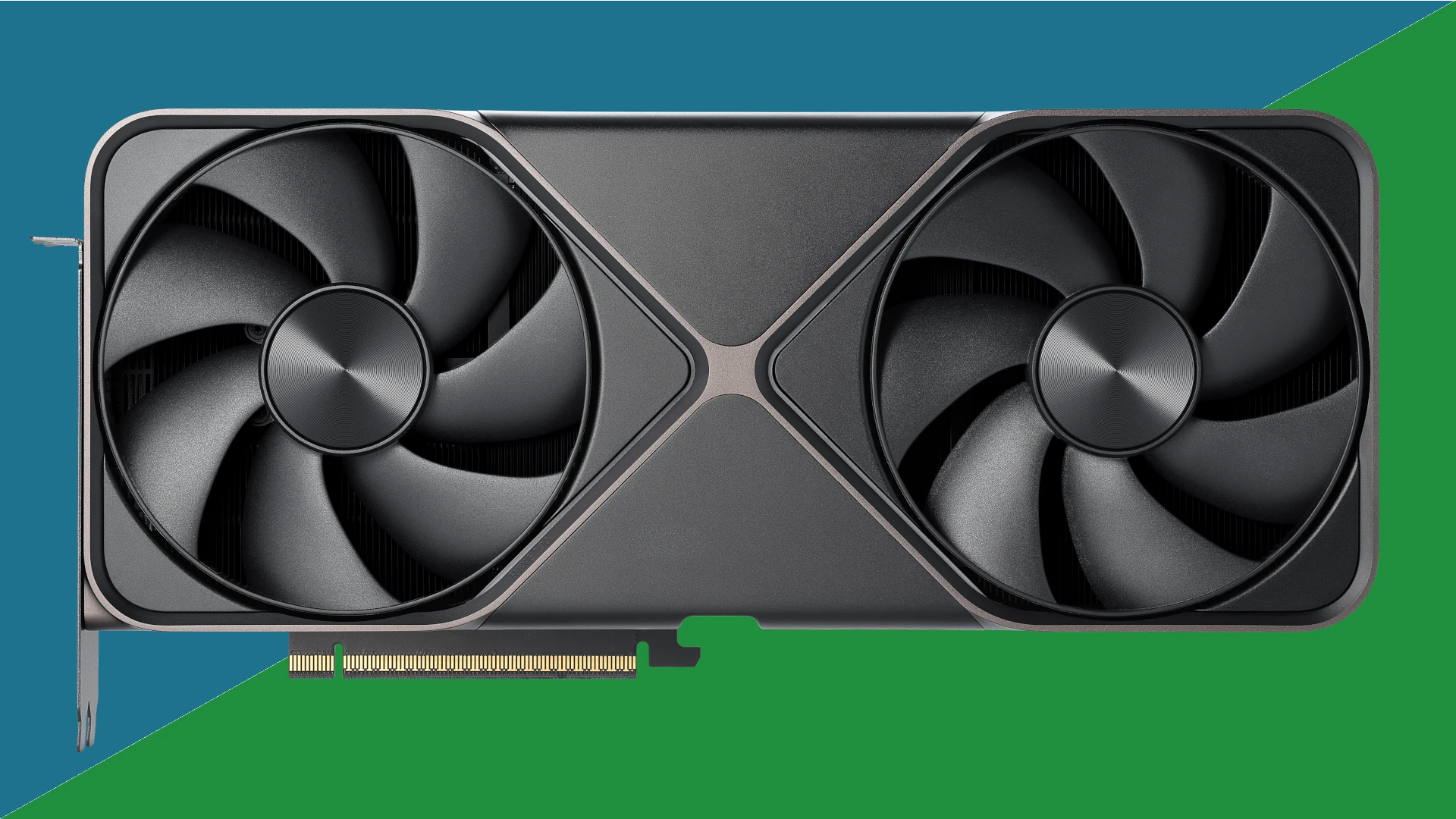
Finding the right graphics card can make a huge difference in your gaming experience. Today’s games demand more power than ever, and having the right GPU ensures smooth gameplay at high settings. The Nvidia RTX 5090 currently stands as the most powerful consumer graphics card on the market in March 2025, though the RTX 4070 Super offers better value for most gamers.
The graphics card market has evolved significantly over the past year, with both Nvidia and AMD releasing competitive options. For budget-conscious gamers, AMD’s RX 7900 GRE and RX 6600 series provide excellent performance without breaking the bank. Mid-range cards like the RTX 4070 hit a sweet spot of performance and price that works for most gaming setups.
When choosing a GPU, consider not only your current gaming needs but also future requirements. The latest cards support advanced features like ray tracing and DLSS, which enhance visual quality and boost performance. Your monitor’s resolution and refresh rate should also factor into your decision, as these determine what level of graphics card would be most suitable.
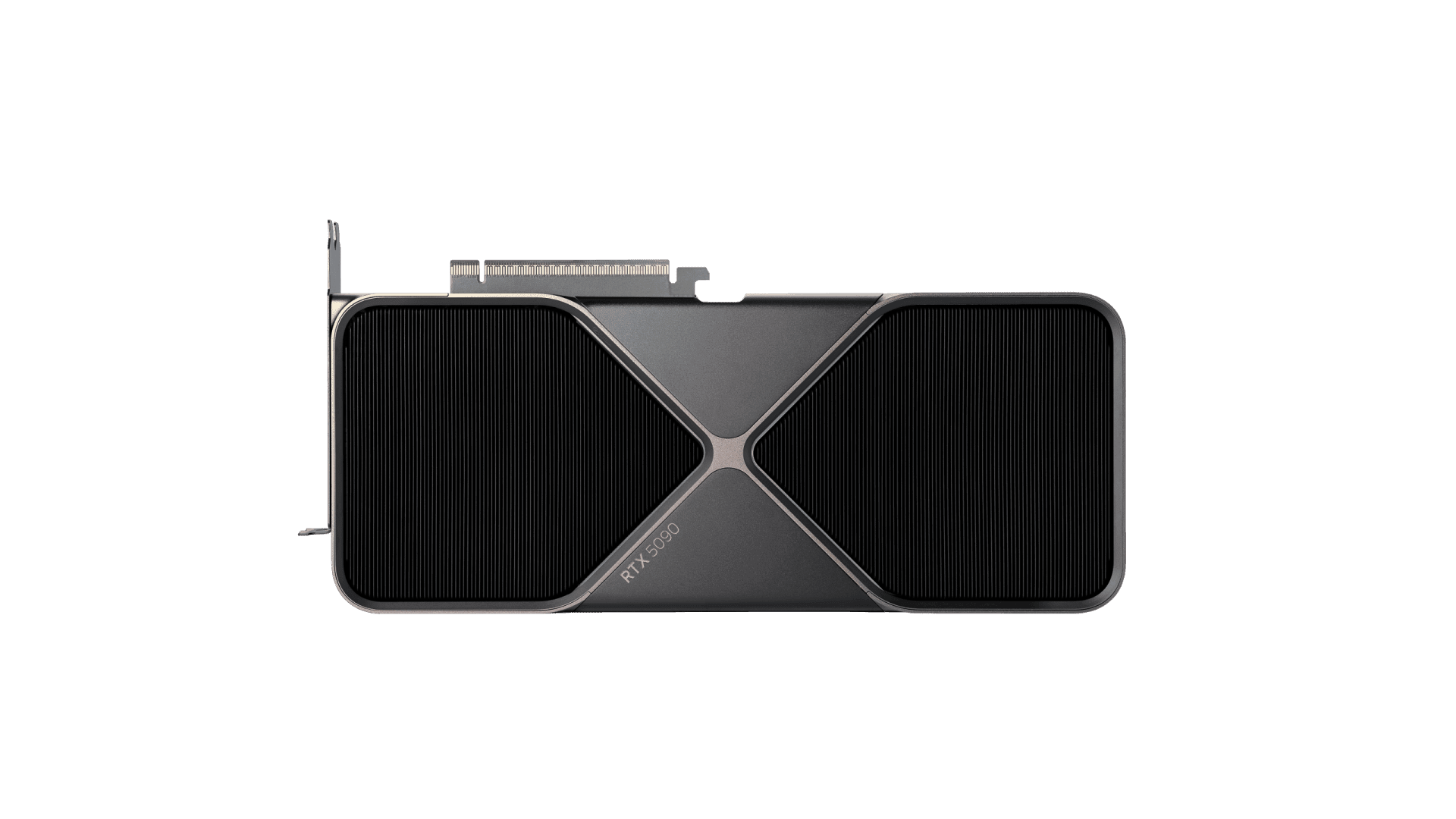
Best Graphics Cards for Gaming
With so many options across Nvidia, AMD, and Intel’s lineups in 2025, picking the right GPU for your rig can feel overwhelming. Whether you’re gaming at 1080p or aiming for buttery-smooth 4K with ray tracing, there’s a graphics card that fits your needs—and your wallet. This guide breaks down the best graphics cards across all price tiers, focusing on real-world performance, upscaling support, and value.
Best Overall: Nvidia GeForce RTX 5090

Why it’s great: The RTX 5090 reigns supreme as the most powerful GPU on the market. It’s engineered for maxed-out 4K, 8K gaming, and professional-grade workloads.
Specs:
- 21,760 CUDA cores
- 32GB GDDR7
- DLSS 4 with Multi Frame Generation
- 1.79 TB/s bandwidth
Price: $1,999
Best for: 8K gaming, simulation, VR, and content creation
Best AMD Flagship Alternative: Radeon RX 9070 XT
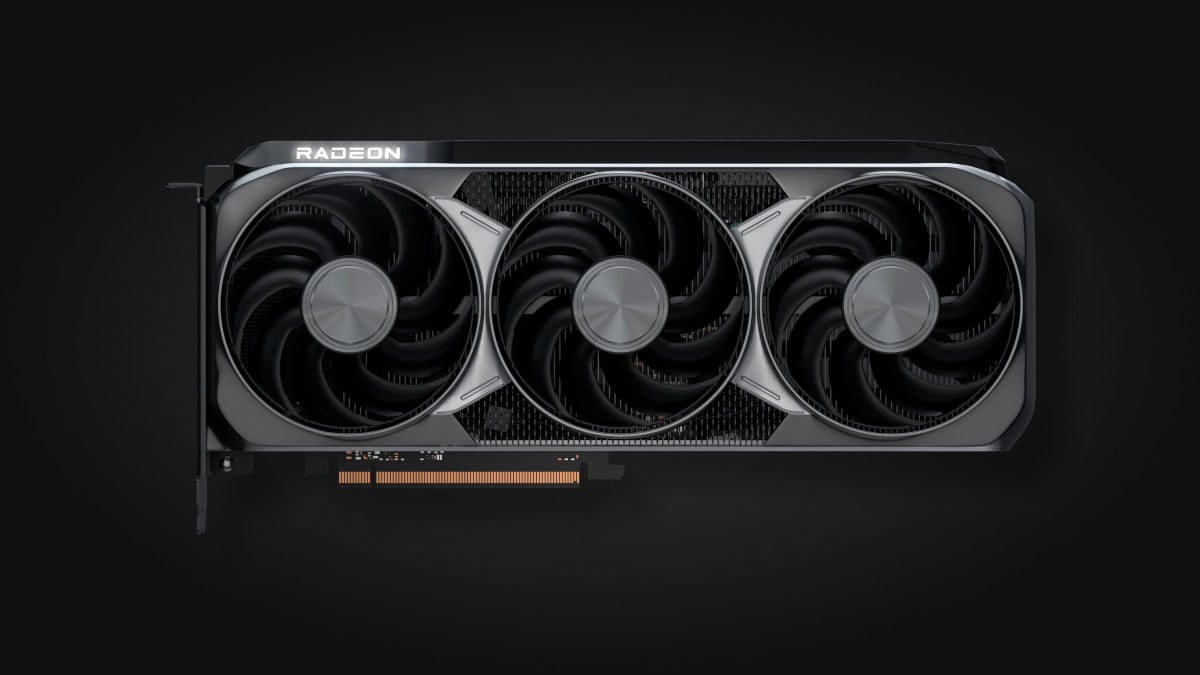
Why it’s great: AMD’s top RDNA 4 card blends strong ray tracing with improved efficiency and AI-powered FSR 4 upscaling, offering tremendous value under $600.
Specs:
- 4,096 stream processors
- 16GB GDDR6
- FSR 4.0
- Competitive 4K and 1440p performance
Price: $599
Best for: High-end gaming with a focus on raw raster performance
Best Midrange Value: RTX 4070 Super

Why it’s great: A strong evolution of the original 4070, the Super version delivers more CUDA cores, better ray tracing, and a sweet spot for 1440p with some 4K capabilities.
Specs:
- 7,168 CUDA cores
- 12GB GDDR6X
- DLSS 3.5, Frame Generation
Price: $599
Best for: Mid-range 1440p gaming with solid ray tracing
Best 4K on a Budget: Radeon RX 7900 GRE
Why it’s great: Originally limited to OEM markets, the 7900 GRE now hits shelves globally, offering near-XTX performance at a steep discount.
Specs:
- 5,120 stream processors
- 16GB GDDR6
- FSR 3.1
- Surprisingly capable in 4K
Price: $549
Best for: Budget 4K builds, content creators
Best Entry-Level Performer: Intel Arc B580
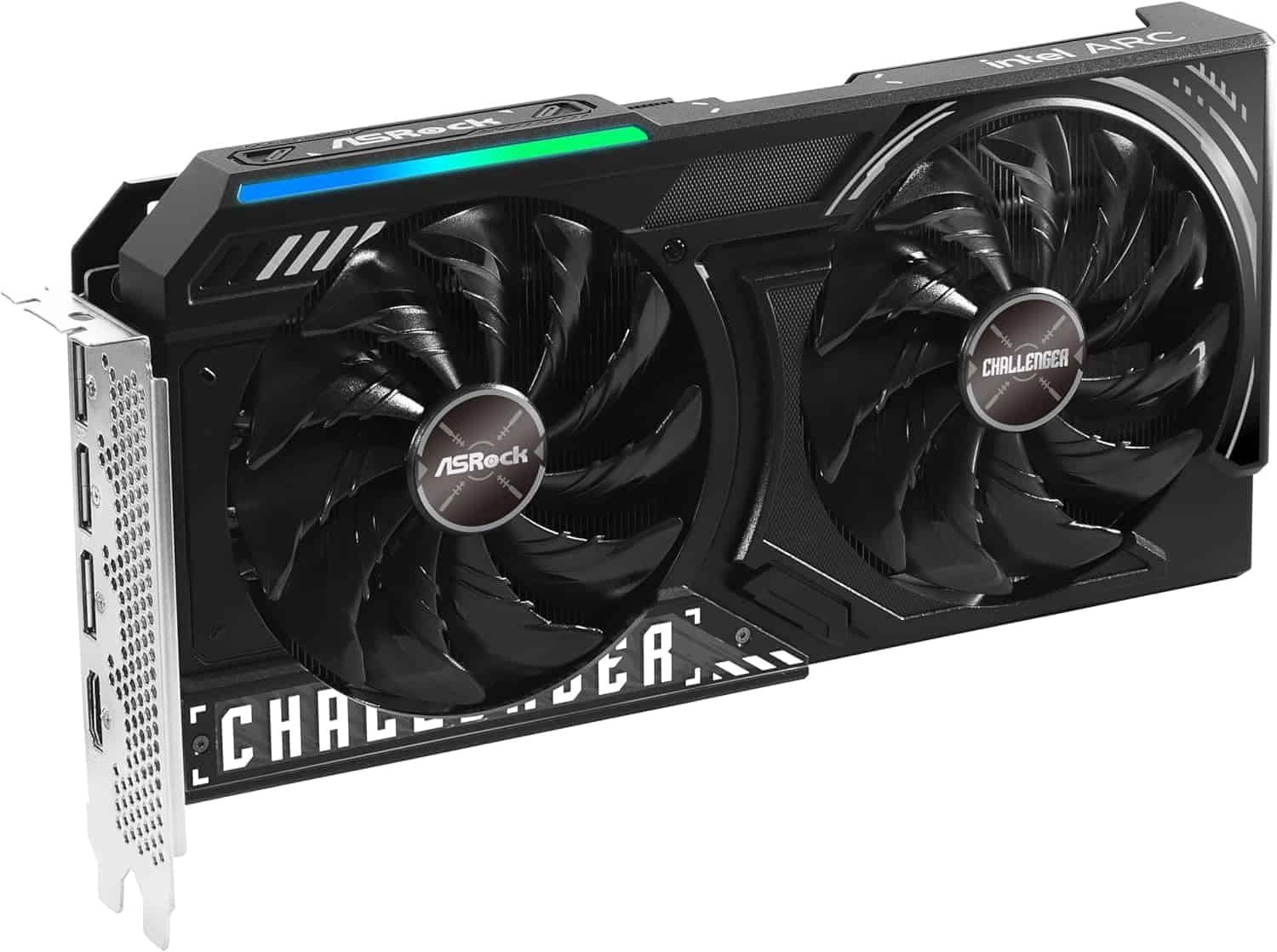
Why it’s great: Intel’s Arc B580 is a surprisingly capable 1080p card. With improved drivers and XeSS upscaling, it’s a fantastic entry point for budget PC gaming in 2025.
Specs:
- 24 Xe cores
- 8GB GDDR6
- XeSS 1.2
- AV1 encode/decode support
Price: $189
Best for: First-time builders, students, indie games
Best Budget 1080p Option: AMD Radeon RX 6600 Series
Why it’s great: Despite being a few generations old, the RX 6600 and 6650 XT are still strong 1080p contenders, especially in systems with limited power or older CPUs.
Specs:
- 1,792 – 2,048 stream processors (6600 vs. 6650 XT)
- 8GB GDDR6
- FSR 2.2
- Low power draw (~130W)
Price: $189 – $229
Best for: Esports, retro titles, light AAA gaming
Best High-Performance 1440p Card: Radeon RX 7900 XTX
Why it’s great: Still a monster in 2025, the XTX now benefits from mature drivers and lower prices, making it a great buy for ultra-settings at high resolutions.
Specs:
- 6,144 stream processors
- 24GB GDDR6
- Dual AV1 encoders
- FSR 3.1 with frame generation
Price: $699
Best for: 1440p ultra gaming with longevity
Best Upscaling and AI Support: RTX 5070 Ti
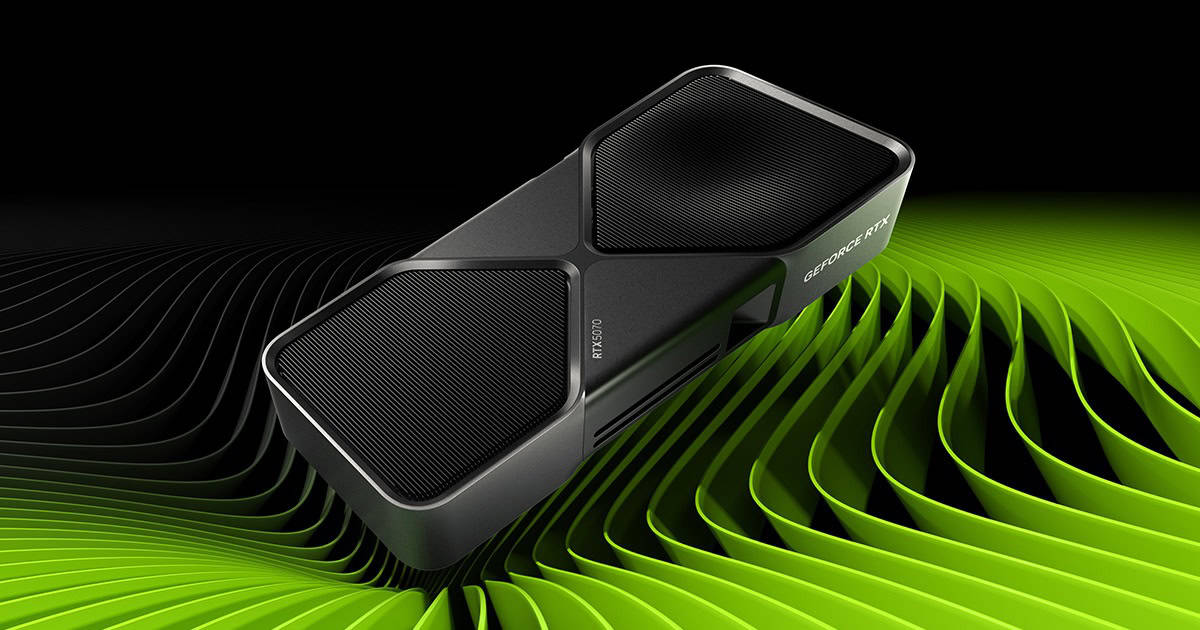
Why it’s great: DLSS 3.5 plus strong RT performance makes this card ideal for future-facing builds, especially when AI-driven features become more common in AAA titles.
Specs:
- 10,752 CUDA cores
- 12GB GDDR6X
- DLSS 3.5 + ray reconstruction
Price: $749
Best for: Visual fidelity, photorealistic gaming
Graphics Card Comparison Table (2025)
| GPU | VRAM | Target Resolution | Upscaling Tech | Ray Tracing | MSRP | Best For |
|---|---|---|---|---|---|---|
| RTX 5090 | 32GB | 4K / 8K | DLSS 4 | Best | $1999 | Enthusiasts, no-compromise builds |
| RX 9070 XT | 16GB | 1440p / 4K | FSR 4.0 | Improved | $599 | High-end AMD gaming |
| RTX 4070 Super | 12GB | 1440p | DLSS 3.5 | Excellent | $599 | Midrange powerhouse |
| RX 7900 GRE | 16GB | 1440p / 4K | FSR 3.1 | Good | $549 | Budget 4K solution |
| RX 7900 XTX | 24GB | 4K | FSR 3.1 | Strong | $699 | High-end 4K performance |
| RTX 5070 Ti | 12GB | 1440p | DLSS 3.5 | Great | $749 | AI-enhanced gameplay |
| RX 6600 / 6650 XT | 8GB | 1080p | FSR 2.2 | Basic | $189+ | Budget 1080p builds |
| Intel Arc B580 | 8GB | 1080p | XeSS | Decent | $189 | Entry-level gaming |
Honorable Mentions: Additional GPUs Worth Considering in 2025
Not every card fits neatly into a category, but several additional GPUs deserve recognition based on their performance, value, and availability.
Nvidia GeForce RTX 5070
Why it matters: The RTX 5070 hits a unique middle ground between the 4070 Super and 5070 Ti. It’s up to 20% faster than the 4070 for a similar MSRP and supports DLSS 4 with Multi Frame Generation (MFG).
Specs:
- 6,144 CUDA cores
- 12GB GDDR7
- 225W TDP
- MSRP: $549
Real-world price: $599–$650
Best for: Gamers seeking solid 1440p/entry 4K with Nvidia’s latest features
AMD Radeon RX 9070
Why it matters: Slightly below the RX 9070 XT in raw power, the RX 9070 is still a strong RDNA 4 card with 16GB VRAM and great AI improvements, but inflated prices make its value more questionable.
Specs:
- 3,584 stream processors
- 16GB GDDR6
- MSRP: $549
Current Price: $669+
Best for: 1440p gamers who can find it under $600
Nvidia GeForce RTX 5080
Why it matters: The second-fastest GPU in Nvidia’s Blackwell lineup, the RTX 5080 delivers excellent 4K performance and DLSS 4 features—if you’re willing to pay for it.
Specs:
- 10,752 CUDA cores
- 16GB GDDR7
- MSRP: $999
Current Price: $1,350+
Best for: High-end 4K gaming with future-proof Nvidia features
Intel Arc B570
Why it matters: Positioned just below the B580, the Arc B570 is a budget pick with 12GB VRAM and solid 1080p performance, though it’s occasionally held back by driver inconsistency.
Specs:
- 2,304 cores
- 12GB GDDR6
- MSRP: $219
Current Price: $250–$300
Best for: Budget gamers needing more VRAM and AV1 encoding
Nvidia GeForce RTX 4060
Why it matters: The 4060 is still one of Nvidia’s most efficient and affordable options, though 8GB of VRAM can be limiting for modern games.
Specs:
- 3,072 CUDA cores
- 8GB GDDR6
- DLSS 3
Price: $299–$330
Best for: 1080p gaming with DLSS support
AMD Radeon RX 7600
Why it matters: AMD’s cheapest RDNA 3 card, it’s a basic 1080p performer with DisplayPort 2.1 and AV1 support. Best used without ray tracing.
Specs:
- 2,048 cores
- 8GB GDDR6
Price: $259–$289
Best for: Entry-level 1080p builds
Intel Arc A750 (Legacy Value)
Why it matters: Although technically a last-gen card, the A750 remains on shelves and offers acceptable 1080p performance with advanced media support and XeSS for under $200.
Specs:
- 8GB GDDR6
- 3,584 cores
- AV1 + XeSS
Price: $189–$219
Best for: Budget gamers or video editors looking for a cheap GPU with strong encoding
More Great GPUs to Consider in 2025
If you’re still weighing your options or trying to hit a specific performance tier, here are even more graphics cards worth considering this year. These additional picks provide great alternatives based on price, refresh rate targets, or VRAM advantages.
AMD Radeon RX 7700 XT
Why it’s worth a look: The RX 7700 XT flies just under the radar but offers excellent 1440p performance with 12GB of GDDR6. It sits right between the RX 7600 and RX 7800 XT and punches above its weight in many esports and rasterized titles.
Specs:
- 3,456 stream processors
- 12GB GDDR6
- Competitive with RTX 4060 Ti
- MSRP: ~$450
Best for: High-refresh 1080p or mainstream 1440p gaming
AMD Radeon RX 7800 XT
Why it’s worth a look: If you’re looking for the highest possible framerate at 1440p or a reliable 4K-capable card on a tighter budget than the RX 7900 series, the 7800 XT is a powerhouse with excellent memory bandwidth and FSR 3.1 support.
Specs:
- 3,840 stream processors
- 16GB GDDR6
- MSRP: $499
Best for: Competitive 1440p and light 4K gaming with room to grow
Nvidia GeForce RTX 4090
Why it’s worth a look: Although not part of the Blackwell generation, the RTX 4090 remains a titan in raw performance. With 24GB VRAM and unmatched CUDA power, it’s still one of the only cards capable of handling 4K at ultra settings with full ray tracing—even without frame generation tricks.
Specs:
- 16,384 CUDA cores
- 24GB GDDR6X
- DLSS 3 exclusive
- MSRP: $1,599 (retail closer to $2,000+)
Best for: Maxed-out 4K and professional rendering workloads
Intel Arc A580
Why it’s worth a look: Don’t sleep on Intel’s budget champ. The Arc A580 offers surprisingly capable 1080p performance with 12GB VRAM, excellent AV1 encoding, and XeSS upscaling—great for gamers on tight budgets or streamers needing GPU-accelerated encoding.
Specs:
- 2,560 vector engines
- 12GB GDDR6
- MSRP: $249
Best for: Budget 1080p gaming with strong video/media support
AMD Radeon RX 7900 XT
Why it’s worth a look: If the XTX version is out of budget, the RX 7900 XT offers nearly the same architecture and capabilities at a more reasonable price point. It’s a smart pick for 4K gaming without paying the Nvidia tax.
Specs:
- 5,376 stream processors
- 20GB GDDR6
- MSRP: $799
Best for: 4K gaming, FSR users, and future-proofed builds
Picking the Right GPU: A Quick Cheat Sheet
| Resolution Target | Budget Range | Recommended GPUs |
|---|---|---|
| 1080p | $200–$350 | Arc B580, RX 7600, RTX 4060, Arc A580 |
| 1440p | $400–$750 | RX 7700 XT, RX 7800 XT, RTX 4070 Super |
| 4K | $700–$1400+ | RX 7900 XT/XTX, RTX 5080, RTX 4090 |
Key Takeaways
- The RTX 5090 leads in raw power while the RTX 4070 Super offers the best overall value for most gaming setups.
- AMD provides competitive options in the budget and mid-range segments with their RX 7900 GRE and RX 6600 series.
- Consider both your current gaming needs and future requirements when selecting a graphics card for optimal performance.
Understanding Graphics Cards for Gaming
Graphics cards serve as the heart of any gaming PC, translating code into the visual experiences gamers enjoy. These specialized components handle the complex calculations needed to render modern games with their impressive graphics and physics.
GPU Architecture and Technologies
Modern gaming GPUs are built on different architectural foundations depending on the manufacturer. Nvidia uses its proprietary architecture (currently Ada Lovelace in RTX 4000/5000 series) featuring CUDA cores as the basic computational units. These cores work together to process graphics data in parallel, enabling complex rendering tasks.
AMD takes a different approach with its RDNA architecture (currently RDNA 3/4), using Compute Units instead. Both architectures have their strengths, with Nvidia often excelling in features like ray tracing and AI capabilities, while AMD frequently offers competitive performance at lower price points.
The architecture directly impacts how efficiently a card can render games and handle advanced techniques like real-time lighting effects. Modern GPUs also incorporate specialized hardware for tasks like ray tracing and deep learning, which enable more realistic lighting and intelligent image upscaling.
Key Features of Gaming GPUs
When evaluating gaming graphics cards, several key features deserve attention. Ray tracing capabilities allow for realistic light behavior, creating more immersive environments with accurate reflections, shadows, and global illumination.
AI-enhanced technologies like DLSS (Nvidia) and FSR (AMD) use deep learning to upscale lower-resolution images, boosting performance without sacrificing visual quality. This is particularly valuable for demanding 4K ultra settings or high refresh rate 1440p gaming.
Cooling solutions vary significantly between models, affecting both noise levels and sustained performance. Cards with better cooling can maintain higher clock speeds under load and often have greater overclocking potential.
Power draw and efficiency have become increasingly important considerations. More efficient cards not only reduce electricity costs but also generate less heat, allowing for smaller builds and quieter operation.
The Impact of VRAM and Memory Bandwidth
VRAM (Video RAM) is crucial for storing game textures and assets. Modern games at high resolutions can easily demand 8GB or more, especially with high-resolution texture packs. For 1080p ultra settings, 8GB is typically sufficient, while 1440p gaming might benefit from 10-12GB, and 4K ultra often requires 12GB or more.
The type of memory (GDDR6, GDDR6X) and its configuration affects memory bandwidth – how quickly data can move between the GPU and its memory. Higher bandwidth allows for smoother performance with high-resolution textures and complex scenes.
Memory bus width is equally important but often overlooked. A wider bus (256-bit vs 128-bit) can significantly impact performance in memory-intensive scenarios, even when comparing cards with identical VRAM amounts.
The latest GPUs feature advanced memory management techniques that optimize how games access data, reducing stuttering and improving frame times even when VRAM is nearly full.
Performance Considerations
Graphics card performance impacts everything from frame rates to visual quality settings in modern games. Understanding how GPUs perform in different scenarios helps gamers make informed purchasing decisions based on their specific needs.
Benchmarking Graphics Cards
Benchmarking provides objective measurements of how graphics cards perform under controlled conditions. Tools like 3DMark, Unigine Heaven, and game-specific benchmarks offer standardized ways to compare GPUs.
Most reviewers use a combination of synthetic benchmarks and in-game testing to evaluate performance. The RTX 5090 currently leads performance charts for consumer cards, but mid-range options like the RTX 4060 offer excellent value for 1080p gaming.
When examining benchmark results, pay attention to:
- Average FPS: Higher numbers indicate smoother gameplay
- 1% Low FPS: Shows how consistent the experience will be
- Power consumption: Measures efficiency alongside raw performance
- Temperature: Indicates cooling requirements and potential throttling
Performance per dollar often matters more than absolute performance for most gamers.
Resolution and Gaming Experience
Resolution significantly impacts GPU requirements. Different cards excel at specific resolution targets:
| Resolution | Recommended GPU Tier | Typical Performance Target |
|---|---|---|
| 1080p | Mid-range | 144+ FPS in most titles |
| 1440p | Upper mid-range | 100+ FPS in demanding games |
| 4K | High-end | 60+ FPS in AAA titles |
The RTX 4060 delivers excellent 1080p performance, while cards like the RX 7900 XTX offer strong value for higher resolutions.
Ray tracing and AI upscaling (DLSS/FSR) features can dramatically improve visual quality, but they affect different GPUs differently. NVIDIA typically leads in ray tracing, while AMD often provides better rasterization performance per dollar.
Real-World Gaming vs. Synthetic Benchmarks
Real-world gaming performance often differs from synthetic benchmark results. Game engines, optimization levels, and specific graphics features create varied GPU demands.
Some games favor NVIDIA architectures, while others run better on AMD hardware. For example, the RX 7900 GRE delivers great general performance at its price point but may lag behind equivalent NVIDIA cards in ray-traced games.
When evaluating a graphics card:
- Check game-specific benchmarks for titles you play most
- Consider future game requirements if you plan to keep the card for several years
- Factor in driver support quality which can significantly impact performance over time
AI workloads like DLSS can dramatically improve frame rates in supported games, sometimes enabling 1440p gaming on cards marketed primarily for 1080p.
Top Picks for Gaming Graphics Cards
Selecting the right graphics card is crucial for gamers who want smooth gameplay and stunning visuals. The current market offers impressive options at various price points, with significant differences in performance capabilities.
Best Overall Graphics Card for Gaming
The Nvidia RTX 5090 currently stands as the most powerful consumer GPU available. It delivers exceptional frame rates at 4K resolution while handling ray tracing effects with minimal performance impact. The card’s advanced DLSS technology uses AI to boost performance further, making it ideal for gamers who want the absolute best experience.
This flagship GPU excels in every gaming scenario, from competitive esports to visually demanding single-player adventures. The cooling system manages heat efficiently even during extended gaming sessions.
The major drawback is its premium price point, which puts it out of reach for many gamers. However, for professionals who use their systems for both gaming and content creation, the investment might be justified by its versatility.
Best Value Graphics Cards
The Nvidia RTX 4070 Super offers an excellent balance between performance and price. It handles 1440p gaming effortlessly and provides decent 4K performance at a more reasonable cost than premium options.
Another standout value option is the AMD RX 7900 GRE, which delivers competitive performance against similarly priced Nvidia cards. AMD’s offering typically provides more VRAM, which benefits texture-heavy games and future-proofs the system to some extent.
Both cards support modern gaming features like ray tracing, though Nvidia’s implementation tends to be more refined. When comparing performance per dollar, these mid-range options often provide the most sensible choice for enthusiast gamers who want quality without breaking the bank.
High-Performance Options
The Nvidia RTX 5070 Ti delivers outstanding performance for serious gamers. It handles 4K gaming with impressive frame rates and offers excellent ray tracing capabilities. The card represents the sweet spot for high-end gaming without reaching the extreme pricing of flagship models.
AMD’s Radeon RX 9070 XT competes strongly in this segment with excellent rasterization performance. It typically offers more VRAM than equivalent Nvidia cards, which helps with texture-heavy games and certain creative applications.
Both manufacturers include their own upscaling technologies—DLSS for Nvidia and FSR for AMD—that can significantly boost performance in supported titles. These features have become increasingly important as games grow more demanding.
For gamers who stream or create content, Nvidia’s superior encoder technology provides an advantage worth considering.
Budget-Friendly Choices
The AMD RX 6600 and its variants (6600 XT, 6650 XT) offer solid 1080p gaming performance at affordable prices. These cards handle most modern games at high settings while maintaining smooth frame rates.
For those who prefer Nvidia, the RTX 4060 provides good 1080p performance with the added benefit of DLSS upscaling and entry-level ray tracing capabilities. These features can extend the card’s useful lifespan as games become more demanding.
Budget cards typically struggle with ray tracing effects, so gamers should focus on traditional rendering performance when shopping in this category.
These more affordable options represent excellent starting points for new PC builders or casual gamers who don’t need to run games at maximum settings or higher resolutions.
Advanced GPU Technologies and Innovations
Modern graphics cards incorporate several cutting-edge technologies that significantly enhance gaming experiences through improved visuals and performance. These innovations represent the frontier of what’s possible in computer graphics.
AI Enhancement and DLSS
AI-powered graphics enhancement has revolutionized gaming performance in recent years. NVIDIA’s Deep Learning Super Sampling (DLSS) technology uses neural networks to upscale lower-resolution images to higher resolutions while maintaining excellent visual quality. This clever approach significantly boosts frame rates without sacrificing image quality.
DLSS 3, the latest iteration, introduces frame generation capabilities that can double or triple framerates in supported games. This technology is particularly valuable for running demanding games at high resolutions with ray tracing enabled.
AMD has responded with FSR (FidelityFX Super Resolution), while Intel offers XeSS. Both alternatives provide similar benefits but work differently than NVIDIA’s implementation.
These AI upscaling technologies are especially beneficial for gamers with mid-range GPUs like the RTX 4060 or those gaming at 4K resolution where raw performance demands are highest.
Ray Tracing and Rasterization
Ray tracing technology simulates how light interacts with virtual objects, creating more realistic reflections, shadows, and lighting effects. Modern GPUs from both NVIDIA RTX and AMD Radeon RX series include dedicated hardware for ray tracing calculations.
The latest GeForce RTX 5070 Ti and Radeon RX 9070 XT models offer significant ray tracing performance improvements over previous generations. This allows for more ray-traced effects at playable framerates.
Rasterization remains the primary rendering technique for most games, with ray tracing applied selectively for specific visual elements. This hybrid approach balances visual fidelity with performance requirements.
The efficiency of these technologies continues to improve with each GPU generation, reducing the performance impact of enabling these advanced visual features.
AV1 Encoding and Future-Proofing
AV1 encoding represents a significant advancement in video compression technology. Current high-end GPUs now support hardware-accelerated AV1 encoding, which offers superior quality-to-bitrate ratios compared to older codecs like H.264.
For content creators, this means the ability to stream at higher quality using less bandwidth. Gamers who stream their gameplay benefit from clearer streams without needing to upgrade their internet connection.
Future GPUs will likely expand on this capability, with improved efficiency and performance expected in upcoming generations. This trend toward better video compression aligns with the growing importance of streaming and content creation.
The adoption of these technologies helps future-proof new GPU purchases, especially important considering the significant investment that high-end graphics cards represent in a gaming PC build.
Considerations Beyond Gaming
While gaming might be the primary focus for many GPU buyers, modern graphics cards serve multiple purposes in today’s computing landscape. Performance requirements vary significantly depending on your specific non-gaming needs.
Graphics Cards for Content Creation
Content creators require different GPU capabilities than gamers. Video editing, 3D rendering, and graphic design applications benefit from different GPU attributes than games do.
For video editing, CUDA cores and compute units are crucial for rendering timelines and applying effects. Adobe Premiere Pro, for example, utilizes GPU acceleration to speed up rendering times dramatically.
3D artists should prioritize cards with ample VRAM. The RTX 4060 and higher models offer excellent performance for Blender and Maya workflows with their dedicated ray-tracing hardware.
AI workloads benefit tremendously from Nvidia’s tensor cores. The more powerful cards like the RTX 5090 excel at machine learning tasks and AI image generation.
Professional-grade GPUs such as Nvidia’s Quadro series offer certified drivers for CAD software, ensuring stability for architectural and engineering work.
GPU Mining Efficiency and Economics
While cryptocurrency mining popularity has fluctuated, GPU efficiency remains important for those involved in mining operations.
Power draw versus computational output represents the key metric for mining profitability. Lower-wattage GPUs with strong compute performance often provide better return on investment despite lower raw performance.
AMD cards have traditionally excelled in certain mining algorithms, though this advantage has narrowed in recent generations. Temperature management becomes critical for 24/7 mining operations.
Modern GPUs include hardware limiters for mining-specific algorithms, particularly targeting Ethereum. This has shifted mining economics toward alternative cryptocurrencies and algorithms.
The environmental impact of mining operations should be considered alongside potential profits. Energy costs vary significantly by region, directly affecting mining profitability.
Integrated Graphics for Basic Needs
Not every computer user needs a dedicated graphics card. Modern integrated GPU solutions handle everyday tasks efficiently.
Intel’s Iris Xe graphics and AMD’s Ryzen APUs provide capable performance for web browsing, video streaming, and office productivity without additional power requirements. Many integrated solutions can even handle light photo editing tasks.
Modern integrated graphics support multiple display outputs and 4K resolution, eliminating the need for dedicated cards for basic multi-monitor setups. They consume significantly less power than discrete GPUs, benefiting laptop battery life.
For casual or older games, integrated graphics often prove sufficient. AMD’s latest integrated solutions perform surprisingly well in games that don’t demand cutting-edge performance.
The cost savings from forgoing a dedicated GPU can be substantial, especially for budget systems where gaming isn’t a priority.
Market and Availability
The graphics card market in 2025 continues to face challenges despite new releases from both Nvidia and AMD. Availability issues and price fluctuations remain significant factors for gamers looking to upgrade their systems.
Dealing With Graphics Card Scarcity
Finding the best graphics cards at reasonable prices continues to be difficult in early 2025. The Nvidia RTX 5000 series launched with limited stock, particularly for the high-end models like the RTX 5090.
Retailers often implement purchase limits of one card per customer to combat scalpers. Some stores use queue systems or loyalty programs to give regular customers priority access.
AMD cards like the RX 7900 GRE tend to have better availability than comparable Nvidia models. This makes them worth considering for gamers who need an upgrade soon rather than waiting for restocks.
Online stock trackers and Discord alert channels have become essential tools for consumers hoping to purchase cards at reasonable prices.
Price Fluctuations and MSRP
The gap between MSRP and actual retail prices remains significant for most graphics cards. The RTX 5070 has an MSRP of $549 but often sells for $600-650 at major retailers.
Mid-range cards typically offer the best value in terms of performance per dollar. The RTX 4070 Super and RTX 5070 Ti ($749 MSRP) provide excellent performance without the extreme markup of flagship models.
Price history trackers show that waiting for seasonal sales can save 10-15% on most models. Black Friday and end-of-quarter sales typically offer the best discounts.
Budget-conscious gamers should consider slightly older generation cards, which see the most significant price drops when new models launch.
Frequently Asked Questions
Graphics card technology continues to evolve rapidly in 2025, with performance improvements and new features appearing across all price points. The market now offers viable options for every budget and gaming need.
What are the top-performing GPUs for high-end gaming in 2025?
The highest-end gaming experience in 2025 is dominated by the Nvidia GeForce RTX 5090, which offers unparalleled performance for demanding games at 4K resolution and beyond. This card excels at ray tracing and AI-enhanced graphics.
AMD’s Radeon RX 9070 XT provides strong competition with excellent frame rates and superior performance in certain titles. It typically offers better raw rasterization performance per dollar than equivalent Nvidia options.
Intel’s top Arc cards have also carved out a niche in the high-end market, though they still trail behind Nvidia and AMD in pure performance benchmarks.
How do RTX 4090 capabilities compare to other high-end gaming graphics cards?
The RTX 4090, while no longer the newest card available, still delivers exceptional performance that rivals many newer cards. Its ray tracing capabilities remain competitive with newer mid-range options.
Compared to current-generation cards, the 4090 offers about 70-80% of the performance of the newer RTX 5070 Ti while consuming more power and generating more heat.
The value proposition has shifted, with newer cards offering better efficiency and enhanced features like improved DLSS technology.
What is the best budget-friendly graphics card for gaming currently available?
For budget-conscious gamers, the Intel Arc B580 represents an excellent value for 1080p gaming. It handles most modern titles at medium to high settings while maintaining solid frame rates.
Last-generation options like the GTX 1070 Ti and RX 480/580 8GB models still provide playable experiences at low to medium settings for many games.
AMD’s entry-level RX cards typically offer better value in the budget segment with superior performance in traditional rendering workflows.
Which graphics cards offer the best cost-to-performance ratio for gamers?
The mid-range market provides the sweet spot for value. The Nvidia RTX 4060 Ti delivers excellent 1440p gaming performance without breaking the bank.
AMD’s options like the RX 7700 XT deliver around 30-35% more performance than their previous generation counterparts while only costing about 26% more, making them highly competitive in terms of value.
When prioritizing cost-efficiency, last-generation high-end cards often outperform current-generation budget options at similar price points.
What are the latest advancements in NVIDIA graphics cards for gaming?
NVIDIA’s latest generation includes significant improvements in ray tracing performance, with specialized cores that handle light simulation more efficiently than ever before.
DLSS technology has evolved to provide near-native image quality while significantly boosting frame rates, even on less powerful hardware. The AI upscaling algorithms continue to improve with each iteration.
Power efficiency has also improved dramatically, with newer cards delivering more performance per watt than previous generations, making them more suitable for smaller builds with limited cooling.
How do laptop GPUs differ from desktop GPUs in terms of gaming performance?
Laptop GPUs typically deliver 70-80% of the performance of their desktop counterparts due to power and thermal constraints. Mobile variants are designed to operate within strict power envelopes.
Cooling solutions significantly impact sustained performance in laptops, with premium gaming laptops maintaining higher clock speeds for longer periods during intensive gaming sessions.
Modern laptop GPUs support technologies like DLSS and FSR, which are particularly valuable in the mobile space as they provide substantial performance improvements within limited thermal constraints.

